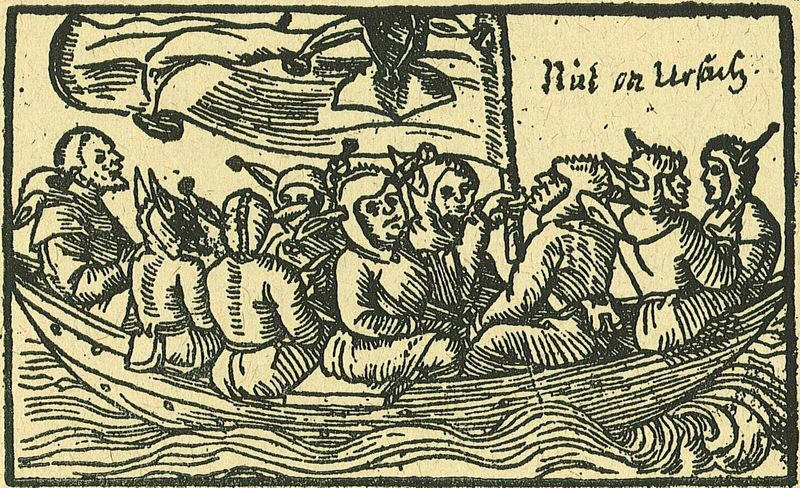Ship of Fools
ex Wiki
QUOTE
The ship of fools is an
allegory
that has long been a fixture in
Western literature and
art. The allegory depicts a vessel populated by human inhabitants who are
deranged, frivolous, or oblivious, passengers aboard a ship without a pilot, and
seemingly ignorant of their own direction. This concept makes up the framework
of the 15th century book
Ship of Fools (1494) by
Sebastian Brant, which served as the inspiration for Bosch's famous
painting,
Ship of Fools: a ship--an entire fleet at first--sets off from Basel to
the paradise of fools. In literary and artistic compositions of the 15th and
16th centuries, the cultural motif of the ship of fools also served to parody
the 'ark of salvation' (as the
Catholic Church was styled).
Michel Foucault, who wrote
Madness and Civilization, saw in the ship of fools a symbol of the
consciousness of sin and evil alive in the medieval mindset and imaginative
landscapes of the Renaissance.[citation
needed]

UNQUOTE
If you take the word of
Michel Foucault
for anything you qualify for your own very ship.